
views
Painting Silicone Caulk
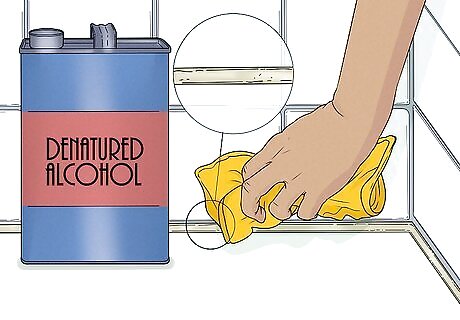
Wipe denatured alcohol over the caulk. Part of the reason paint won’t stick well to silicone is because of how smooth the silicone is. Denatured alcohol will act as sandpaper to roughen up the surface of the silicone. Pour the alcohol onto a rag and wipe it over the surface of the silicone caulk. Leave it for 5 to 10 minutes and it will evaporate on its own. Denatured alcohol has additives which makes it non-drinkable. You can find it at supermarkets, like Walmart, and at home improvement stores. Denatured alcohol has the effect of sandpaper as far as changing the texture of the silicone, but it is more effective than actual sandpaper would be.
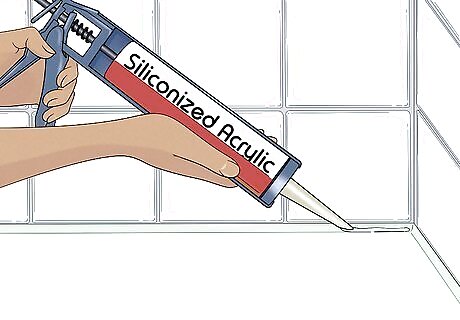
Apply siliconized acrylic latex to the caulk. The siliconized acrylic latex will act as a second caulk and will make the surface even easier to paint. The silicone acrylic latex will typically come in a bottle. Use scissors to cut the tip of the applicator on the bottle at a 45-degree angle. Then, load it into a caulking gun. Use the caulking gun to apply the acrylic latex to the caulk. Wait 10 minutes for it dry before moving on to the next step. Apply steady and firm pressure while using the caulking gun. A caulking gun can be purchased at any home improvement store. Check the label for exact instructions on the drying time.
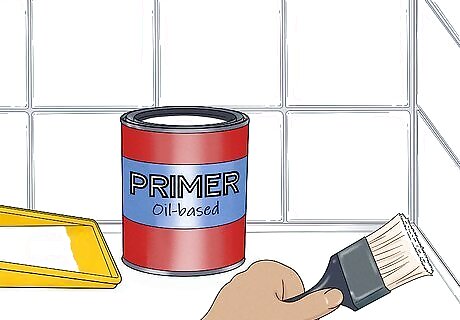
Paint the caulk with oil-based primer. An oil-based primer will stick to silicone the best. Use a paintbrush to apply a thin and even layer of primer. Wait about 1 hour and then apply a second layer. After the second application of primer, wait at least 1 more hour before using the oil-based paint on the silicone. Check the product’s label for a precise drying time.
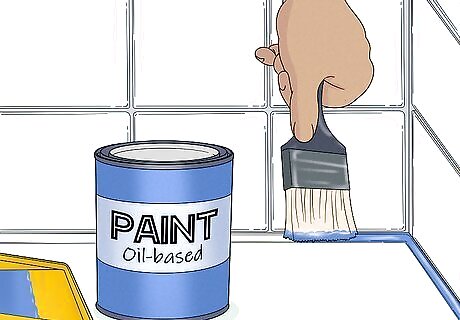
Use an oil-based paint on the caulk. Read the instructions on the paint label before application. Then, use a paintbrush to apply the first layer of paint. Wait 6 to 8 hours and then apply a second layer, if needed. Allow the paint to dry completely before allowing the silicone to get wet or exposing it to moisture. Oil-based paint is the type of paint that sticks best to silicone. On average, oil-based paint dries within 6 to 8 hours, but check the label on the paint for a precise drying time.
Applying Paint to Silicone Prosthetics or Props
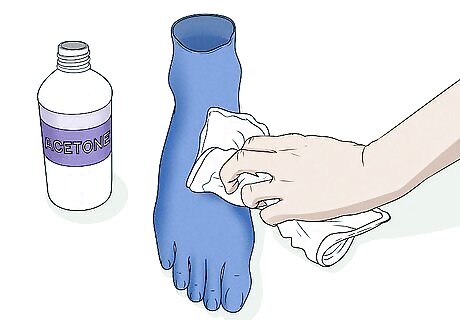
Wipe down the silicone with acetone or limonene. The silicone first needs to be cleaned to remove any grease or remaining release agent (a bonding chemical). You can do this by pouring acetone, delimolene (orange solvent), or isopropanol on a rag and wiping down the entire surface of the silicone prop or prosthetic.
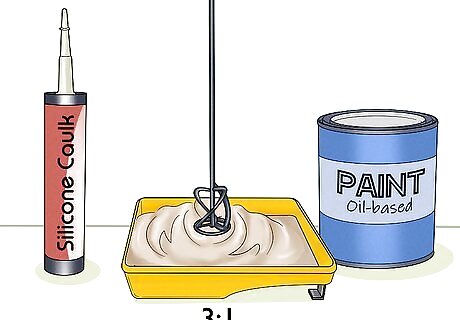
Mix 3 parts oil-based paint and 1-part silicone caulking. Silicone is a flexible material, so it’s necessary to use a flexible paint in order for it to stick to the silicone. Mixing an oil-based paint with silicone caulking will make the paint even more flexible than it already is. Use a paint mixer to mix the paint and caulking thoroughly. You can buy oil-based paint and silicone caulking at any home improvement store.
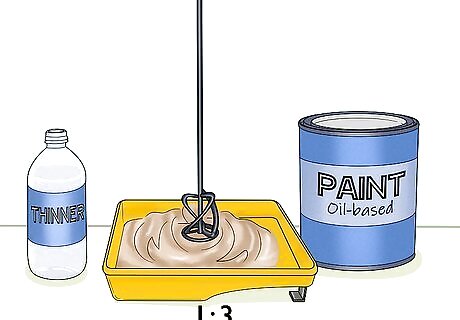
Add 1-part paint thinner to 3 parts of the paint and caulk mixture. After the paint is mixed with caulking, you may find that it is a little too thick for an even application. To thin the paint down, add an orange solvent or some white spirit. Mix in 1 part thinner to 3 parts paint, and stir the mixture. Then, the paint will be thin enough to use in an airbrush, if you choose to apply the paint that way. It’s not necessary to thin the paint if you don’t think that it is too thick. You can tell the paint is too thick if it doesn’t easily spread over the surface of the silicone.
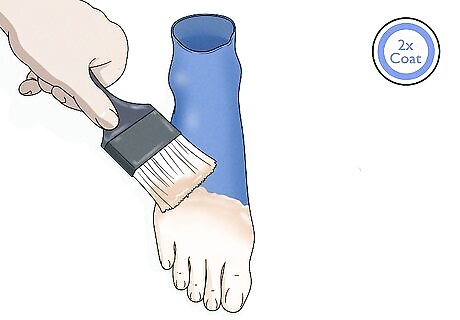
Apply a thin layer of paint. A thin layer of paint is especially important if you are painting a prosthetic or prop that you want to look to realistic. Apply the paint with an airbrush or paintbrush. If you’re using an airbrush, make sure to hold it at least 10 to 14 inches (25 to 36 cm) away from the surface of what you’re painting, and move the airbrush in a quick side-to-side motion. Create a thin and even layer and then wait 2 to 4 hours for the paint to dry. Check the paint’s label for exact drying instructions.

Allow each layer to dry completely before adding another coat. Building up the layers of paint will allow your painted prop or prosthetic to have depth, which will make it look more realistic. Apply the second layer and then wait 2 to 4 hours. Continue to build up layers until you are satisfied with the object’s appearance. Then, let the paint dry completely before use. Typically, it’s a good idea to wait a full 24 hours before touching or using the silicone object. Look at the label on the paint for precise drying instructions.



















Comments
0 comment